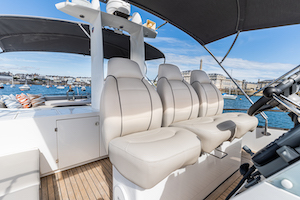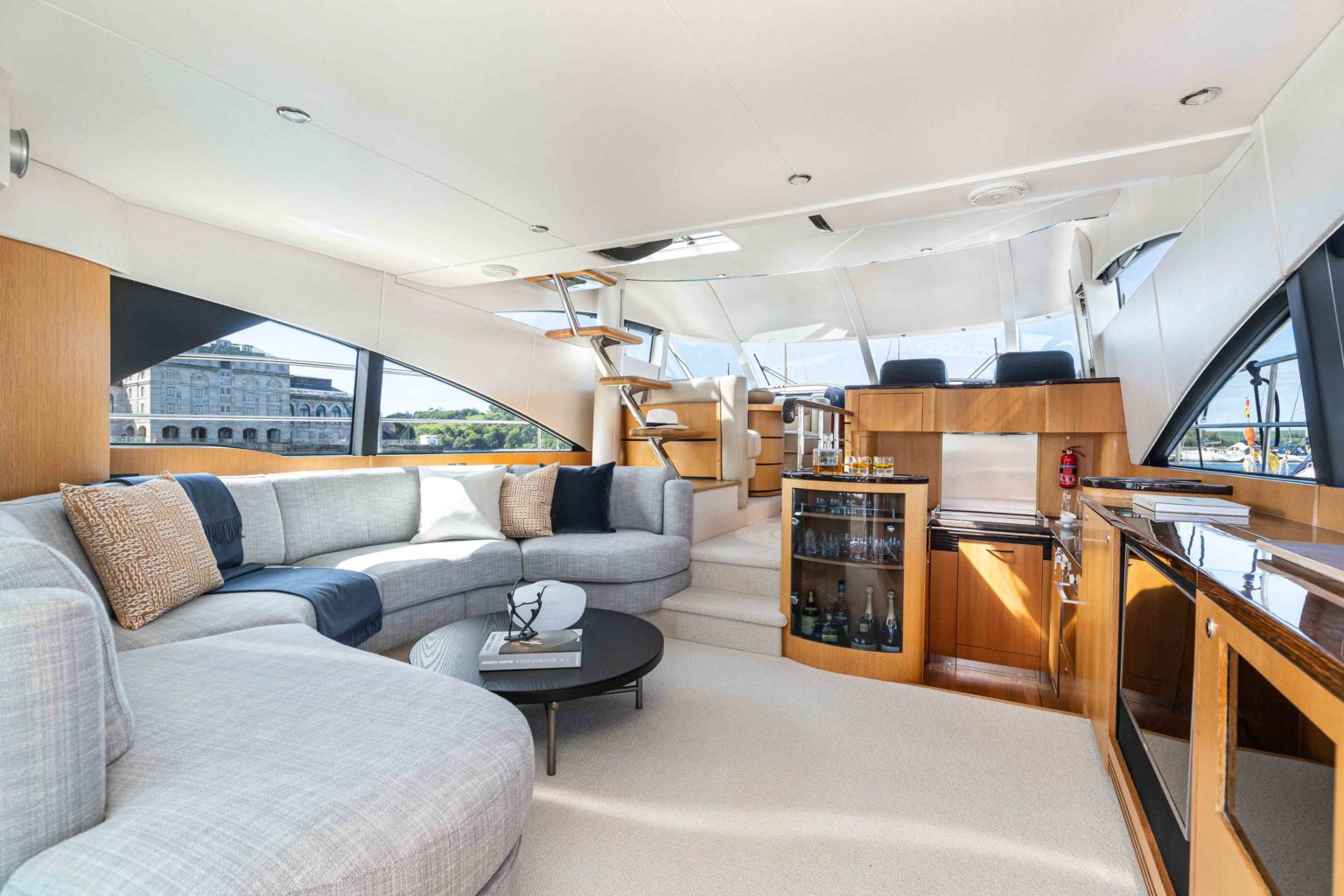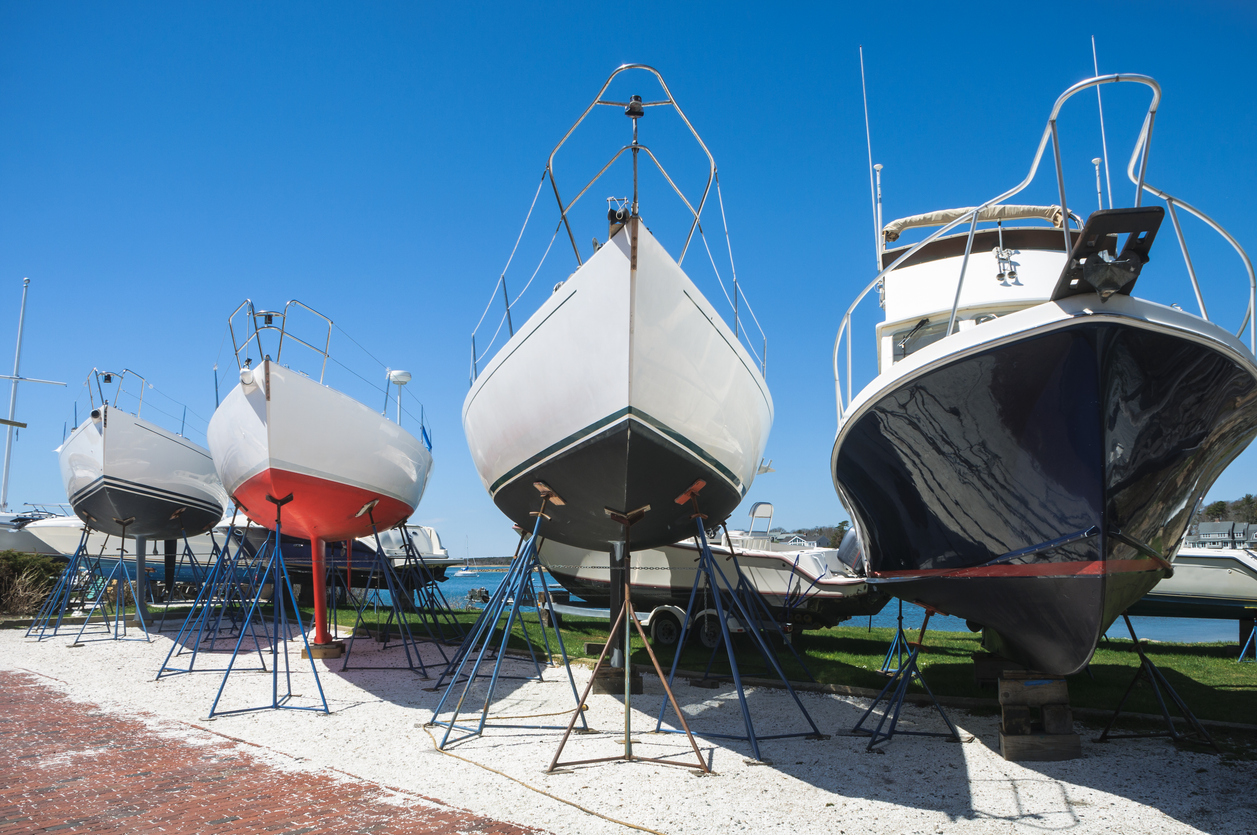It sounds too good to be true: a motor yacht with fully updated technical systems, plus interior finishes that match the style and quality of a new boat, yet at a fraction of the price.
The accelerating pace of change in both interior design and technology means many aspects of even the best quality motor yachts can appear dated after 10 years, even if the external shape still looks great. Equally, engines may have clocked up only a few hundred hours of their intrinsic 5-10,000 hour lifespan.
Refitting such a vessel to match the standards of new yachts that leave factories today is therefore a potential route to a quality contemporary yacht at a knockdown price. This is exactly what Setag Yachts, founded by former Princess Yachts CEO Chris Gates, is set up to do.
Of course, there have long been yards that will carry out comprehensive refit work, so what’s different about Setag? In effect, it’s a design company, rather than simply a collection of skilled tradesmen. This means every project can be approached from first principles: what has changed in styling and equipment since this boat was launched? If it was a new boat leaving the factory today, what interior finishes would be offered? What systems and equipment would it have?
Setag Yachts reimagine the clients’ boats as if they were new releases. Photo: Setag
“We’re a collection of professionals that designed, engineered and built these boats originally,” Gates says. “The first thing we do is look at it from how we would deliver that boat if it was coming brand new out of the factory tomorrow. We will do what you ask, but will also put forward suggestions to you to bring your boat up to a very modern standard.”
Setag’s considerable experience and expertise in new yachts, encompassing design, engineering and interior styling, enables each project to be approached from a fundamental design perspective in the same manner as for a new yacht. Clients are therefore treated in exactly the same manner as those who order a new yacht from one of the big manufacturers. “They'll sit down with an interior designer, discuss the type of interior they're looking for, and then we'll put proposals to them, including mood boards and artist impressions so they can get comfortable with their choices.” Gates told me. A similar process also happens for engineering and other technical upgrades.
Through this approach Setag is able to fully update an older boat and in doing so can even make it significantly better than when first launched. For example, when I interviewed Gates the company was working on a Sunseeker Superhawk 48 for an owner who “wants it to be an absolute head turner.”
Other Setag executives include Phil Heys, who was formerly engineering director of Princess, and Andrew Peck, a 20-year veteran at Sunseeker International. “We can give the client incredible confidence in our collective pedigrees,” says Gates. “We're doing a quote for a very large Sunseeker at the moment, and the same engineers that were involved in the original build will be involved in the refit.”
Interior improvements typically go well beyond changing fabrics and veneers. “Any cooking equipment, fridges, cookers, microwaves, worktops, are normal for us to change,” says Gates. “When you step on board afterwards, it will have the feel, touch and smell of a new boat.” This aspect includes updating audio-visual systems – typically TV screens are built into the joinery work of these yachts, but expectations have changed enormously over the past 10 years. Replacing these is therefore not a trivial task, but gives any yacht a more contemporary feel and enhances the whole on-board experience.
Setag Yachts update the entire yacht- from fabric to electronics. Photo: Setag
The process generally involves stripping the yacht bare, which gives the opportunity to get deep into the systems and update anything where technology or expectations have moved on since the boat was built. It also means any unseen wear and tear can be rectified to improve future reliability.
One result of the domestic systems and audio-visual equipment of large yachts becoming rapidly dated is that depreciation can be severe. However, this gives plenty of scope for refit work. Gates gives the example of 10-15 year old Fairline Squadron 58s, a £2 to 2.5 million yacht when new, that can now be bought second hand and comprehensively refitted within a total budget of £500,000. He says a full treatment of such a boat typically costs 15-20 percent of its current value.
Timescales needed to carry out a full refit are remarkably short, especially compared to the months or even years required for a new yacht. Setag recently completed a Squadron 58 refit, for instance, in five weeks, while a Princess 440 took only three weeks.
This Fairline Squadron 58 only took 5 weeks to refit. Photo: Setag
Staying on track
As with property renovation, there are plenty of stories about refit projects whose scope expands during the work and therefore takes longer, and costs far more, than was ever envisaged at the outset. How does Setag guard against that?
Gates says it’s through a combination of expertise, good project management and tight control. “Because we understand the process from ground zero, we've not had project creep of any magnitude yet,” he adds, “although sometimes you come across problems that you can’t envisage, or the customer sees that you’re providing excellent value and asks you to do more.
“One of my objectives is to change the perspective of refit,” he says. “I think refit doesn’t have the name it deserves.” Part of the reason for this is that historically the industry has been very fragmented, with many small businesses that do fantastic work within their specialist trades. However, a proportion don’t have the resources for full project management and control, or fail to define the realistic scope of a project at the outset.
By contrast he says, “We're set up to say: "We'll give you a fixed quotation and a fixed window for the work to take place. And we'll give you a fully quality assured process, treating you in the same way as a new boat customer, because you're spending that sort of money."
In this respect Setag’s offer has more in common with superyachts, where plenty of 10, 15 and even 20 year old yachts have gone back to their builders for an extensive makeover. However, although this relatively easy for a superyacht yard focussed solely on custom projects, it’s not an option for production boat builders whose work flow is incompatible with one-off projects such as refits.
How popular could this concept become? Gates says Setag’s longer term expansion will be limited only by the number of appropriately skilled employees they can recruit, although he doesn’t envisage a problem in the next two or three years.
“It’s complicated work – the average skill level per employee has to be very high, much higher than a main core builder,” he told me. “You need to have people that can think around problems themselves, who have the same moral compass as yourself, and who don't need close supervision. The people we use are all ex main brand boat builders and we can be very particular about who we employ, because we don't need that many.”
A comprehensive refit is also a far more sustainable way of owning a yacht than building a new vessel, which uses a vast amount of raw materials that generate huge carbon emissions. Setag are committed to generating positive change for people and for the environment by building responsible and sustainable considerations into every stage of their refits – and of course, the simple act of ‘recycling’ an existing yacht is the ultimate in upcycling.
“Once you know you can trust the people doing the work, it becomes a very intuitive decision to make,” says Gates.
Examples of yachts refitted by Setag will be on berths M650 and M652 at the Southampton Boat Show, which runs from September 10-19.
Main: Photo: Setag








